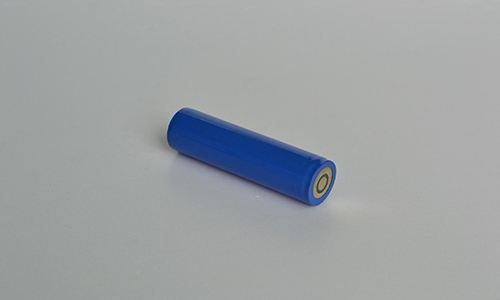Self-Discharge Rate of Lithium-Ion Battery
Aug 20, 2019 Pageview:4283
Self-discharge is not uncommon and all batteries are affected by it. Unlike what most people think, self-discharge is not a manufacturing defect. Instead, it is a common battery characteristic that’s bound to show at some point. However, poor handling and fabrication of the battery can escalate the problem. Also, you need to know that self-discharge is a permanent condition that cannot be reversed.
There are certain factors that increase the self-discharge process of batteries. This includes the cycling process, ageing of the battery and using the battery in high temperatures. For that reason, it is advisable that you discard your battery if the self-discharge rate gets to 30% within a 24-hour period. All in all, self-discharge varies according to the battery type and chemical composition.
For instance; Lithium-Ion and Alkaline batteries tend to retain their stored energy better. This means that they can be stored unused for several years without losing their capacity. The loss of energy in batteries though is asymptotical. This is to say that immediately after being charged, that’s when the self-discharge rate is highest. But it tapers off after the charge is used for some time.
Why Does My Battery Self-Discharge?
There are a couple of reasons why a battery self-discharge when left to sit on the shelf. This process is often caused by the electrochemical processes occurring within the cell that translates as the application of an external load.
Here are the common reasons why your battery is unable to hold charge:
· In most cases, the battery has reached its maximum service life. This could be around 4 or 5 years.
· There is a parasitic drain that’s probably depleting the power of your battery.
· Your battery might be having an electrical problem that’s affecting your battery’s power retention.
· Poor maintenance of the battery.
What is the Discharge Rate of a Battery?
The self-discharge condition in batteries is mostly a function of time. This is to mean; self-discharge varies from time to time. For instance: right after charging the battery, that’s when the self-discharge rate is at its highest. However, it tapers off with time. Also, some batteries tend to have a higher discharge rate than others. This is influenced by their chemical composition and type.
However, the self-discharge rate is also affected by age and frequent use of the battery. That is because it creates a crystalline formation also known as the memory that leads to self-discharge. That being the case, you can perform a full discharge of the battery to keep the battery memory foam in check.
When it comes to Lithium Ion batteries, they tend to discharge at a rate of 5% during the first 24 hours. Afterwards, the battery tapers off and now loses 1 or 2% in a month. However, the protection circuit results to another additional 3% per month. Also, a faulty separator in the battery could increase the self-discharge of your battery.
In the end, it leads to the generation of excess heat by the battery. In extreme cases, this could initiate a serious thermal breakdown. There is so much similarity between the Lead-acid battery and Lithium Ion battery in terms of self-discharge.
The estimated self-discharge rate of other batteries is as follows: Alkaline: 3% per year, Lead-acid: 5% per month, Lithium metal: 10% within 5 years and Nickel-based: 15% per month as well as within 24 hours.
The decline in self-discharge rate is facilitated by the build-up of a passivation film that occurs on the lithium anodes of the battery. If you want to reduce the self-discharge rate of your batteries, you can try storing the batteries in a cool place with lower temperatures.
How Do You Discharge a lithium ion battery?
Lithium-Ion batteries come in a wide range of sizes from the tiny sizes that power hearing aids, to the larger ones found in your automobiles. That said, the amount of time spent on discharging the battery will be majorly determined by its size and the battery capacity.
During the very first stages of discharging your battery, the lithium atoms in the battery chemical composition oxidize to form lithium ions and some electrons. On the other hand, the lithium ions tend to move towards the positive electrode. Therefore, they diffuse through the separator and the electrolyte.
The electrons then flow from the negative electrode and move to the positive electrode. This occurs in the external circuitry and the resulting current flow is used for a wide array of applications. On the positive electrode, these electrons then recombine with the lithium ions. They are then stored within the molecular structure of the active materials.
Discharging your battery could however come with many adverse side effects. This is not a healthy practice as far as the life of that battery is concerned. In case you are wondering why; the battery could lead to problems such as degradation of the cathode and side reactions of electrolyte solution or electrode.
Such internal issues with your battery only play a big role in limiting the longevity of your battery. Also, your battery tends to wear down to some extent when it’s discharged completely. This is to say, if you discharged your battery all the way from 100% to 0%, there is a high chance that it will experience the potential degradation of its capacity by 30%.
Therefore, you are not doing your Lithium-ion batteries any good by letting them drain to almost empty before charging them. The best thing to do is to operate at an average charge range which could be between 80 and 30%.
In Summary
As we have seen from the article above, the charge and discharge rate of a lithium battery is very crucial. That is why you need to highly maintain your battery in order to preserve its capacity. That is because the regular charge and discharge of lithium-ion batteries only lead to unwanted deposits of the lithium metal on the anode.
This could potential lead to the loss of the battery capacity. Also, it could lead to an internal short circuit that is caused by elevated self-discharge.
- Prev Article: How much do you know about 18650 Battery Discharge?
- Next Article: Homemade 18650 battery pack
Leave Message
Hottest Categories
-
Hottest Industry News
-
Latest Industry News











